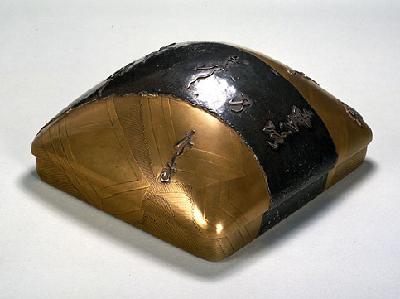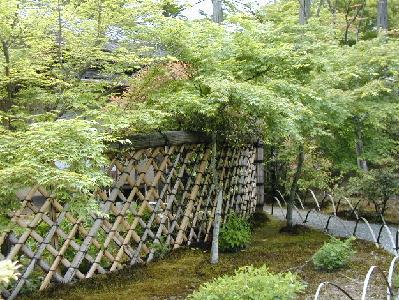|
Hon’ami Koetsu was a calligrapher and artist in the early Edo period. He was also well known as the leading tea master of the time.
Hon’ami Koetsu was born into a family of swordsmiths who created and sharpened swords in Kyoto. He showed talent in a wide range of fields including calligraphy, pottery, lacquer, publishing, architecture and landscape design.
He especially excelled in calligraphy and, along with Konoe Nobutada and Shokodo Shojo, he came to be known as one of the Three Brushes of the Kan’ei Era (Kan’ei no Sanpitsu) . He founded his own personal style known as Koetsu-ryu, developed from the Japanese calligraphy style.
Hon’ami is also credited with founding the Rimpa School in the field of painting, together with Tawaraya Sotasu and Ogata Korin. His works include Rakuyaki Kamigawa-chawan ceramic teacups and Funabashi Makie Suzuribako lacquer work- both of which are designated as National Treasures, and Tsurushitae-wakakan painting, designated as an Important Cultural Asset.
In 1615, Hon’ami began an artist community called Koetsu-mura or Koetsu village in Takagamine, north of Kyoto, in the land granted by Tokugawa Ieyasu. He developed his own artistic style further and was also believed to have supervised all the work there.
Hon’ami Koetsu was born into a family of swordsmiths who created and sharpened swords in Kyoto. He showed talent in a wide range of fields including calligraphy, pottery, lacquer, publishing, architecture and landscape design.
He especially excelled in calligraphy and, along with Konoe Nobutada and Shokodo Shojo, he came to be known as one of the Three Brushes of the Kan’ei Era (Kan’ei no Sanpitsu) . He founded his own personal style known as Koetsu-ryu, developed from the Japanese calligraphy style.
Hon’ami is also credited with founding the Rimpa School in the field of painting, together with Tawaraya Sotasu and Ogata Korin. His works include Rakuyaki Kamigawa-chawan ceramic teacups and Funabashi Makie Suzuribako lacquer work- both of which are designated as National Treasures, and Tsurushitae-wakakan painting, designated as an Important Cultural Asset.
In 1615, Hon’ami began an artist community called Koetsu-mura or Koetsu village in Takagamine, north of Kyoto, in the land granted by Tokugawa Ieyasu. He developed his own artistic style further and was also believed to have supervised all the work there.
| [+ADDRESS] | 
|















